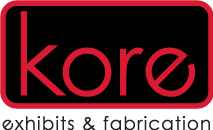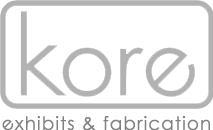Measuring Brand Awareness and Engagement at Trade Shows
When it comes to the way you determine brand recognition it can be vague and difficult to comprehend. However, with the right method, it could be one of the most straightforward things you can track.
Establishing a strong brand image and increasing engagement with visitors are key goals for successful trade show participation. But, it’s equally crucial to assess the impact of participation at trade shows to assess if the goals are being achieved. Effective measurement methods enable you to measure the impact of your efforts and make decisions based on data in order to improve the future of your participation.
Exit Surveys
For booths that are larger, exit surveys are effective in assessing brand recognition and perception. The trick is to ask the right questions and ensure an effective segmentation of the responses. Surveys are a great way to get feedback from the moment and guarantee an abundance of high-quality responses that are in real-time during the event.
Exit surveys can provide useful insight into how your attendees view their brand’s identity, the things they find interesting about your booth or the presentation, and how they might be changed to make it better. By asking specific questions regarding brand awareness and participation, it is possible to collect information that will aid in making informed choices regarding future trade show strategies.
Utilizing technologies like QR codes or tablets will make it much easier to survey at the end of each day or the end of an event. When you analyze the outcomes of these surveys, you will gain a better understanding of how your company is perceived by the market and adjust in line with the results!
Examining the Resonance of Messaging Connection
To gauge your brand’s awareness make a list of your messaging and content. It’s not enough just to make great content or create materials. You must also determine whether your message is getting through to the intended audience. Resonance measurement is a way to determine the extent to which your message connects with individuals emotionally and goes beyond surface-level engagement. By studying various metrics of engagement, including comments, shares, likes, and click-through rates, you can gain valuable insight into the effectiveness of your communication strategies as well as their impact on your customers.
In assessing the resonance, you should be aware of the emotional reaction generated by the brand’s messages. Are people interested in your content because it is aligned with their ideals, rouses the emotions of their friends, or creates an emotional connection? The level of involvement can reveal how well your message resonates with them.
Shares, likes, and comments are concrete indications of engagement from the audience and reflect the level of their enthusiasm and commitment to your message. Tracking these metrics across different platforms and channels will give you an extensive view of the way your message is appreciated and shared by the people you want to reach. When you ask how your customers liked the brand’s message You can determine the effectiveness of your communications strategies and make changes when necessary!
Understanding Purchase Intent: Customer Motivation
Understanding the intent of a buyer is essential in determining the efficiency of your trade shows. By asking specific questions, you can determine the level of their curiosity and the obstacles that hinder them from engaging. To collect data on purchase intent effectively, think about using a variety of methods like interviews, surveys, as well as feedback forms. These methods let you directly interact with participants and collect their opinions and thoughts. In addition, leveraging technologies such as electronic displays, interactive screens, or other tools could increase the efficiency of data collection and improve accuracy.
While doing this, identifying the obstacles that prevent customers from purchasing a product or even recognizing you as a brand can be equally crucial. Are there particular concerns or obstacles that hinder the decision-making process of your customers? If you address these concerns front-to-front, you can eliminate possible obstacles and increase the probability of conversion.
The ability to gain insight into the intent behind purchases gives you a better understanding of the motivations and choices. When you are actively looking for ways to understand the motive behind purchases, you will uncover valuable insights into customer behavior, help you refine your strategies, and get more effective outcomes. When you identify the primary factors and obstacles that influence the purchase decision adjust your value proposition and messaging to be more appealing to the people you want to reach. By constantly assessing and tweaking your approach in light of these findings, you will enhance the engagement of your brand, improve conversion rates, and eventually succeed at trade exhibitions.
Qualitative Engagement – Understanding the Perceptions of Audiences
A crucial aspect of gauging the level of brand recognition is to evaluate the level of engagement with your brand. What exactly does engagement mean to your intended customers? Are you merely aiming for likes, comments, and sharing on social networks? Does it go further than creating a lasting and genuine connection to your company? To assess the effectiveness of engagement, first, you have to assess the effectiveness of interactions between guests and representatives of your brand. These interactions can give useful insight into how your audience experiences and interacts on behalf of your business.
Quantitative metrics like comments, likes, and shares are easy to measure and give a clear idea of the degree of participation by the audience however, they don’t necessarily reflect the level of engagement. True and meaningful engagement is more than just numbers. It requires fostering feelings of relationship, and trust with your audience and its customers.
Do your customers perceive your brand as reliable, trustworthy, and in line with their beliefs?
Are they ardent advocates who are willing to be open to sharing their positive experiences with other people?
Knowing these perceptions will aid in assessing the level of engagement as well as the influence your brand’s image is making on its audience. Be aware that it is how you approach engagement, not the quantity that creates the brand’s loyalty and advocacy. Try to design events that connect with the customers and help build lasting relations with your company.
Test Messaging: Ensure Your Brand is Identifiable
In a crowded exhibit hall filled with extravagant exhibits, and conflicting messages it is essential to ensure that your message can cut through the clutter and catch all the interest of your intended public. Through a strategic testing approach, you can establish whether your branding message is concise, clear memorable, and effective.
If it is hard to see your messages objectively, you might consider asking the assistance of other people to give you a fresh perspective. Send your message to friends, colleagues, or even potential customers and solicit their honest opinions. Are they drawn to read the message? Does it seem to be logical? Make sure your message does not contain terminology or terms used in the industry that could be confusing for the people you are trying to reach. By analyzing the opinions of diverse people, you will get a better comprehension of how your message is perceived by your audience and make any changes that are needed.
As well as soliciting feedback, you might want to consider A/B tests to test different versions of your message. Create several versions of your message and test them out with various segments of your targeted group of customers. Examine the responses, engagement levels, and general impact from each variant to determine which resonates the best. This method of analysis based on data allows you to make a more informed decision regarding which strategy for messaging will yield the greatest results.
Testing your messaging is an iterative process. Based on feedback as well as the insights and data collected, you can refine and improve your strategy for communicating. Make the necessary adjustments to ensure your message is relevant intelligent, sensible, and in line with the goals of your brand. Keep in mind to be flexible and discover what appeals to your audience.
Avoiding Being Complicated
In the case of trade exhibit booths, smaller is usually more. Intense details or ad-hoc messages could confuse, causing a lot of stress to visitors and diminishing the effectiveness of the message. To leave an impact it is important to keep your message simple, clear, and captivating.
While it might be tempting to show off your vast language or expertise be careful not to overcomplicate things in your language. Make sure that your words are understandable and by the majority of people who attend. If you use specific industry terms or technical terms be sure to provide explicit reasons or explanations to guarantee your message is inclusive and understandable for a wide audience.
By simplifying your booth’s contents and message, you provide a more inviting and enjoyable experience for visitors. A concise and clear message can help visitors understand the core of your brand’s name products and services. It allows you to create an impression, create curiosity, and create positive connections with potential customers. Keep in mind that simplicity is key to making an impact at trade exhibitions. Effective strategies breed results
When learning to gauge your brand’s awareness might initially be difficult because of its non-tangible nature, implementing the correct strategy can ease the process and give valuable information. When you prioritize strong brand recognition and engagement at trade shows and use efficient methods of measuring, you will be able to assess the impact of your presence and make educated decisions that will improve outcomes in the future. By analyzing and tracking the data, you can continually modify your strategies, boost the return on investment, and ultimately have greater success in establishing brand recognition and creating relationships with attendees at trade shows.


